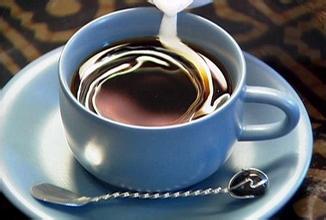Different Flavor description of Honey-treated Coffee beans after Solar washing
Different Flavor description of Honey-treated Coffee beans after Solar washing
If you are a roaster, in order to provide better coffee beans, you need to have a good understanding of the origin of raw beans, the height of planting and the method of processing, because these factors can help you better mix and mix unique coffee. Of course, when buying honey to treat coffee beans, you should not forget to taste them first, because not all honey-treated coffee is of high quality. if you have to pick out the advantages and disadvantages of the three, the best taste is "black honey". Because the endocarp has the most amount, the taste is the richest and stronger. So why produce "yellow honey" and "red honey"? Coffee farmers also need to consider from a commercial point of view, that is to say, to produce "black honey" requires twice as many other kinds of drying beds and requires more time, manpower and energy; and not all buyers have the financial ability to buy "black honey", so the production of "yellow honey" and "red honey" can be said to be a choice for the coffee production environment.
Washing method: the peel, pulp and mucous membrane are removed by washing and fermentation. This method is also known as the complete washing method (Fully Washed). Shampoo is the most common way for most coffee-producing countries in the world to handle Arabica coffee beans. Some areas also use advanced high-pressure washing machines to clean the peel, pulp and mucous membrane of coffee beans, so fermentation is no longer needed. This method of using a high-pressure washing machine to treat coffee beans is called "natural washing (Pulped Natural)" coffee beans: each fruit contains two coffee beans (except for a single pod Peaberry. The fruit of this kind of coffee contains only one coffee bean. Normally, 5% of each batch of coffee beans is a single pod. Coffee beans are dried and processed to bake silver skin (Silver Skin/Chaff): there is a thinner film inside the parchment that surrounds the beans. Because the color is glossy and silvery, people used to call it "silver skin". This layer of silver will fall off during baking. Usually when you grind the coffee, you find some silver crumbs in the coffee powder. These crumbs are the silver peel and Skin/Pulp that cannot be peeled off from the coffee bean during baking: the outermost layer of the coffee bean is wrapped in a berry-like skin and pulp. In addition to the natural sun method, coffee beans treated by other methods must remove the skin and flesh within a few hours after picking. Similar to the cherries we often eat, the difference is that when we eat cherries, we mainly eat the pulp and peel of berries. For coffee, peel and pulp are important by-products. In some places, people use the peel and pulp of coffee to make tea. People in the industry used to call the peel and pulp of coffee "Pulp". The machine used to remove the pulp is called the "desizing machine".

Important Notice :
前街咖啡 FrontStreet Coffee has moved to new addredd:
FrontStreet Coffee Address: 315,Donghua East Road,GuangZhou
Tel:020 38364473
- Prev

Flowering and fruiting cycle of Coffee Tree-- introduction to the processing process from Coffee Fruit to Bean
The flowering and fruiting cycle of coffee trees-- an introduction to the processing process from coffee fruit to beans. 1. Dry method: fresh fruit is dried or dried, peel and seed coat are removed by sheller, and impurities are sieved. 2. Wet method: this method is used for mass production. Peel the fresh fruit with a peeling machine, separate the bean grains from the peel, soak the peeled beans in water, wash, dry, and then remove them.
- Next

Analysis of Coffee hand injection at fixed Point-Coffee Heart-shaped manipulation Video
Coffee hand fixed-point injection method analysis-coffee flower heart-shaped manipulation video (speaking of which, is drinking coffee from Brother Chao. For such a baker, I study with reverence. (for a cup of single product, the first thing to consider should be beans, but today I won't talk about beans (you can learn from Mr. Sun Chao). Let's assume that you have an excellent bean in your hand.
Related
- What brand of black coffee is the most authentic and delicious? what are the characteristics of the flavor of the authentic Rose Summer Black Coffee?
- Introduction to the principle and characteristics of the correct use of mocha pot A detailed course of mocha pot brewing coffee is described in five steps.
- Which is better, decaf or regular coffee? how is decaf made?
- How much is a bag of four cat coffee?
- How about four Cat Coffee or Nestle Coffee? why is it a cheap scam?
- Which is better, Yunnan four Cats Coffee or Nestle Coffee? How about cat coffee? is it a fake scam? why is it so cheap?
- How about Cat Coffee? what grade is a hoax? which instant coffee tastes better, four Cat Coffee, Nestle Coffee or G7 coffee?
- Process flow chart of coffee making-Starbucks coffee making process what coffee tastes good at Starbucks
- The top ten best coffee beans in the world Rose summer coffee or Tanzanian coffee tastes good
- Yunnan four cat coffee is good to drink?_four cat coffee is a big brand? four cat blue mountain coffee is fake?

